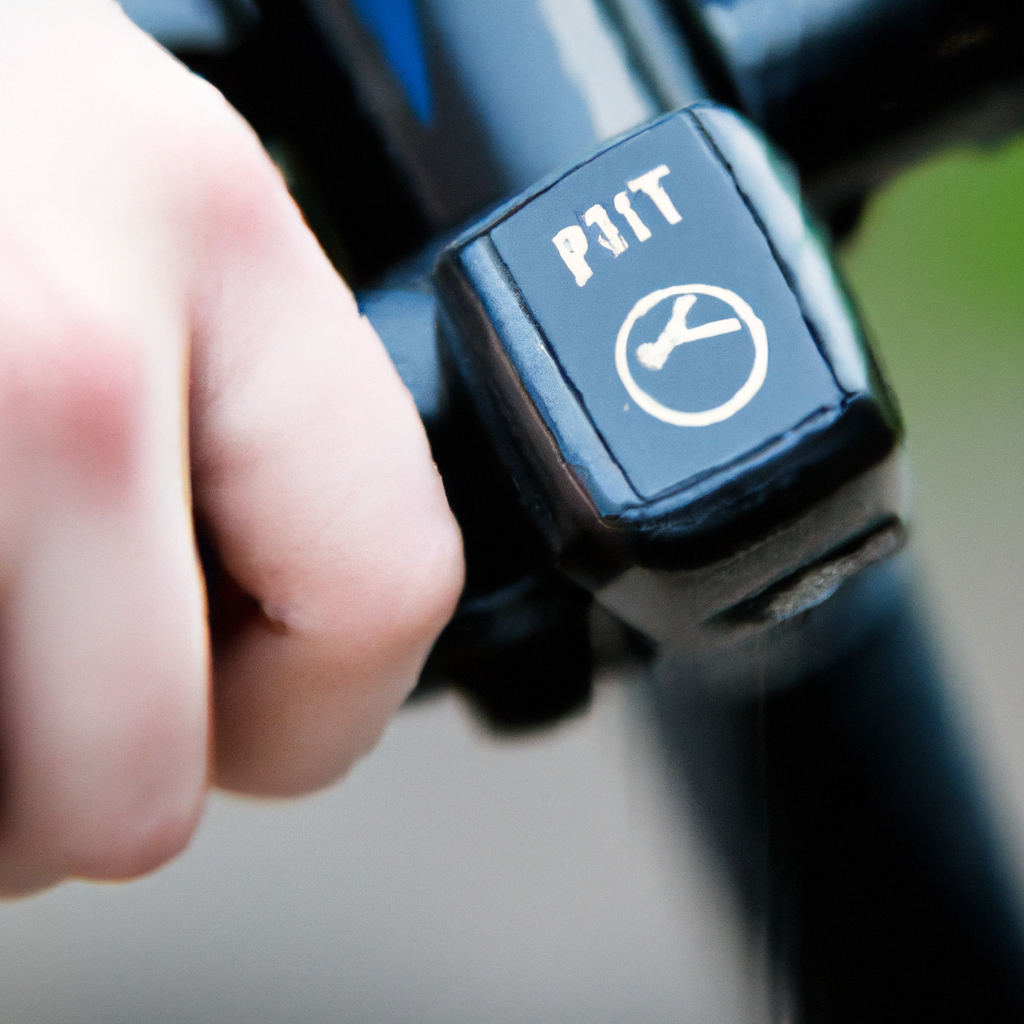Are you a new electric bike rider looking for some guidance on how to start and stop on your bike? Look no further! In this video tutorial, we will provide you with a visual guide on the basics of starting and stopping on an electric bike. Whether you are riding in an urban or off-road environment, this tutorial is designed to help you gain confidence and become a skilled e-biker. So, get ready to hop on your electric bike and let us show you the ropes in the most friendly and informative way possible!
Section 1: Introduction to Electric Bikes
Understanding Electric Bikes
Electric bikes, also known as e-bikes, are bicycles with an integrated electric motor that assists in propulsion. They provide a convenient and eco-friendly mode of transportation, combining the benefits of a traditional bicycle with the ease of motorized assistance. E-bikes are gaining popularity worldwide, offering a fun and efficient way to commute, exercise, and explore the outdoors.
Advantages of Electric Bikes
There are numerous advantages to riding an electric bike. Firstly, they make cycling more accessible to a wider range of individuals, including those with physical limitations or who may struggle with traditional bicycles. The electric motor provides assistance, making pedaling easier and allowing riders to tackle hilly terrains or longer distances with less effort. Additionally, e-bikes are a cost-effective mode of transportation, reducing fuel expenses and eliminating the need for parking fees. They also have a lower impact on the environment, as they produce zero emissions and help reduce carbon footprints.
Safety Considerations
While electric bikes offer many benefits, it is important to prioritize safety when riding them. Always wear a properly-fitted helmet to protect your head in case of any accidents. Follow traffic rules and ride in designated bike lanes whenever possible. Be aware of your surroundings and anticipate the movements of other road users. It is also essential to familiarize yourself with the controls of the electric bike and practice basic riding skills to ensure a safe and enjoyable riding experience.
Section 2: Getting Started
Choosing the Right Electric Bike
Selecting the right electric bike is crucial to ensure comfortable and enjoyable rides. Consider factors such as your intended use, terrain, and budget when choosing an e-bike. Decide whether you need a city bike, a mountain bike, or a hybrid model based on your preferences. Test ride different models to find the one with the most suitable frame size and riding position for your body. It is also important to choose an e-bike with a battery that meets your desired range and charging needs.
Checking the Battery
Before every ride, it is essential to check the battery level of your electric bike. Ensure that the battery is fully charged, as a low battery can affect the performance of the e-bike and may cause unexpected stops. Familiarize yourself with the battery indicators and charging requirements provided by the manufacturer. Regularly inspect the battery for any signs of damage or wear and replace it if necessary. Taking care of the battery will ensure optimal performance and longevity.
Adjusting the Seat and Handlebars
Proper adjustment of the seat and handlebars is crucial for comfort and control while riding an electric bike. Adjust the seat height so that your feet can comfortably reach the ground when you are seated. A slight bend in the knee when the pedal is at its lowest point is ideal for efficient pedaling. Adjust the handlebars to a position that allows you to maintain an upright posture and reach the brake levers comfortably. Making these adjustments will enhance your riding experience and reduce the risk of discomfort or strain.

Section 3: Starting and Stopping on an Electric Bike
Understanding the Controls
Before starting your electric bike, it is important to understand and familiarize yourself with the different controls. Most electric bikes have a power button to turn the bike on and off, a throttle or pedal-assist mode selector to control the level of assistance, and brake levers to engage the brakes. Some e-bikes may also have additional features such as a display screen that shows speed, distance, and battery level. Take the time to read the manufacturer’s instructions and become comfortable with the controls before hitting the road.
Starting the Electric Bike
To start your electric bike, ensure that the battery is sufficiently charged and turned on. Mount the bike by swinging your leg over the frame and placing your feet on the pedals. Begin pedaling or engage the throttle to activate the electric motor and experience the assistance it provides. Start slowly and gradually increase your speed to get accustomed to the electric bike’s capabilities. Practice starting on flat ground before attempting more challenging terrains.
Stopping Safely
Stopping a moving electric bike safely is crucial for your own safety and the safety of others. To stop your e-bike, gently squeeze the brake levers to engage the brakes. Apply even pressure to both brakes for balanced braking. Gradually reduce your speed and come to a complete stop before dismounting the bike. Practice stopping in different situations, such as on hills or while turning, to develop good braking techniques and ensure smooth and controlled stops.
Section 4: Visual Guide: How to Start and Stop on an Electric Bike
Preparing for the Visual Guide
To provide a comprehensive understanding of starting and stopping on an electric bike, a visual guide can be helpful. Before going through the steps, ensure you are in a safe and open area to perform the actions described. Make sure you have your electric bike, properly fitted helmet, and any necessary safety gear.
Step 1: Mounting the Bike
Stand on one side of the bike and swing your leg over the frame. Place both feet on the ground and ensure they are properly set on the pedals. Ensure that the seat height is adjusted according to your comfort level and that you have a firm grip on the handlebars.
Step 2: Starting the Bike
Turn on the electric bike by pressing the power button. Make sure the battery is sufficiently charged and the throttle or pedal-assist mode is set to your desired level of assistance. Begin pedaling or engage the throttle to activate the electric motor. Feel the instant boost and assistance provided by the motor.
Step 3: Riding and Controlling Speed
Once the bike is in motion, you can control the speed and level of assistance. Pedal at a comfortable pace or adjust the throttle to increase or decrease the assistance from the electric motor. Experiment with different levels of assistance to find the one that suits your riding style and terrain. Use the handlebars to steer the bike and maintain balance while riding.
Step 4: Stopping the Bike
When it is time to stop, gently squeeze the brake levers to engage the brakes. Gradually reduce your speed by applying even pressure to both brakes. Come to a complete stop before dismounting the bike. Practice this step multiple times to perfect your braking technique.
Tips for Smooth Starting and Stopping
To ensure smooth starting and stopping on an electric bike, consider the following tips:
- Start on flat ground before attempting hills or challenging terrains.
- Anticipate stops in advance and gradually reduce your speed.
- Be aware of your surroundings and allow sufficient distance for braking.
- Practice your balance and braking techniques regularly to build confidence.

Section 5: Common Mistakes to Avoid
Loss of Balance
Maintaining balance is essential while riding an electric bike. To avoid losing balance, always focus on the road ahead and keep your body centered on the bike. Avoid sudden movements or jerky steering that can disrupt your stability. Practice maintaining balance by riding in a straight line and gradually building up to more challenging maneuvers.
Sudden Acceleration
Avoid sudden and excessive acceleration, especially when starting from a stop. Gradually accelerate to build momentum and maintain control. Sudden acceleration can lead to loss of balance or skidding, which may result in accidents or falls. Practice smoothly and steadily increasing your speed to ensure a safe and enjoyable ride.
Slamming on the Brakes
Braking too abruptly or forcefully can lead to loss of control or skidding. Apply even pressure to both brakes to slow down gradually and come to a stop. Slamming on the brakes can cause the bike to tilt forward and throw the rider off balance. Practice applying the brakes smoothly and efficiently to ensure safe stops in various situations.
Section 6: Troubleshooting
Difficulty Starting the Bike
If you encounter difficulty starting your electric bike, there could be several possible causes. Check if the battery is fully charged and properly connected. Ensure that the power button is pressed firmly and held for a few seconds to turn on the bike. If the issue persists, consult the manufacturer’s instructions or contact the retailer for further assistance.
Unexpected Stops
If your electric bike unexpectedly stops while riding, it could be due to a low battery or a loose connection. Check the battery level and recharge if necessary. Inspect all connections, including the battery, throttle, and motor, to ensure they are secure. If the problem continues, consult a professional technician for troubleshooting and repairs.
Battery Drain Issues
If you notice significant battery drain on your electric bike, there may be underlying issues that need attention. Check for any accessories or components that may be drawing excessive power and disconnect or replace them if necessary. Ensure that the battery is properly charged and not nearing the end of its lifespan. If the battery drain problem persists, consult a knowledgeable technician to diagnose and resolve the issue.

Section 7: Conclusion
Reviewing the Basics
In this comprehensive article, we have covered the basics of starting and stopping on an electric bike. We discussed the advantages of electric bikes, safety considerations, and the importance of choosing the right e-bike for your needs. We also provided guidelines on adjusting the seat and handlebars for optimal comfort and control. Understanding the controls and practicing good starting and stopping techniques are essential for a safe and enjoyable riding experience.
Building Confidence as an E-biker
As a new e-biker, building confidence takes time and practice. Start by familiarizing yourself with your electric bike and its controls. Develop good riding habits, such as maintaining balance, avoiding sudden acceleration, and applying the brakes smoothly. Gradually increase your riding skills by practicing in different environments and challenging terrains. Remember to always prioritize safety and adhere to traffic rules and regulations.
Final Thoughts
Electric bikes offer a fantastic way to commute, exercise, and enjoy the outdoors. By following the tips and guidelines provided in this article, you can confidently start and stop on your electric bike. Remember to always prioritize safety, be aware of your surroundings, and regularly maintain your e-bike for optimal performance. Embrace the joy of riding an electric bike and explore the world on two wheels!




